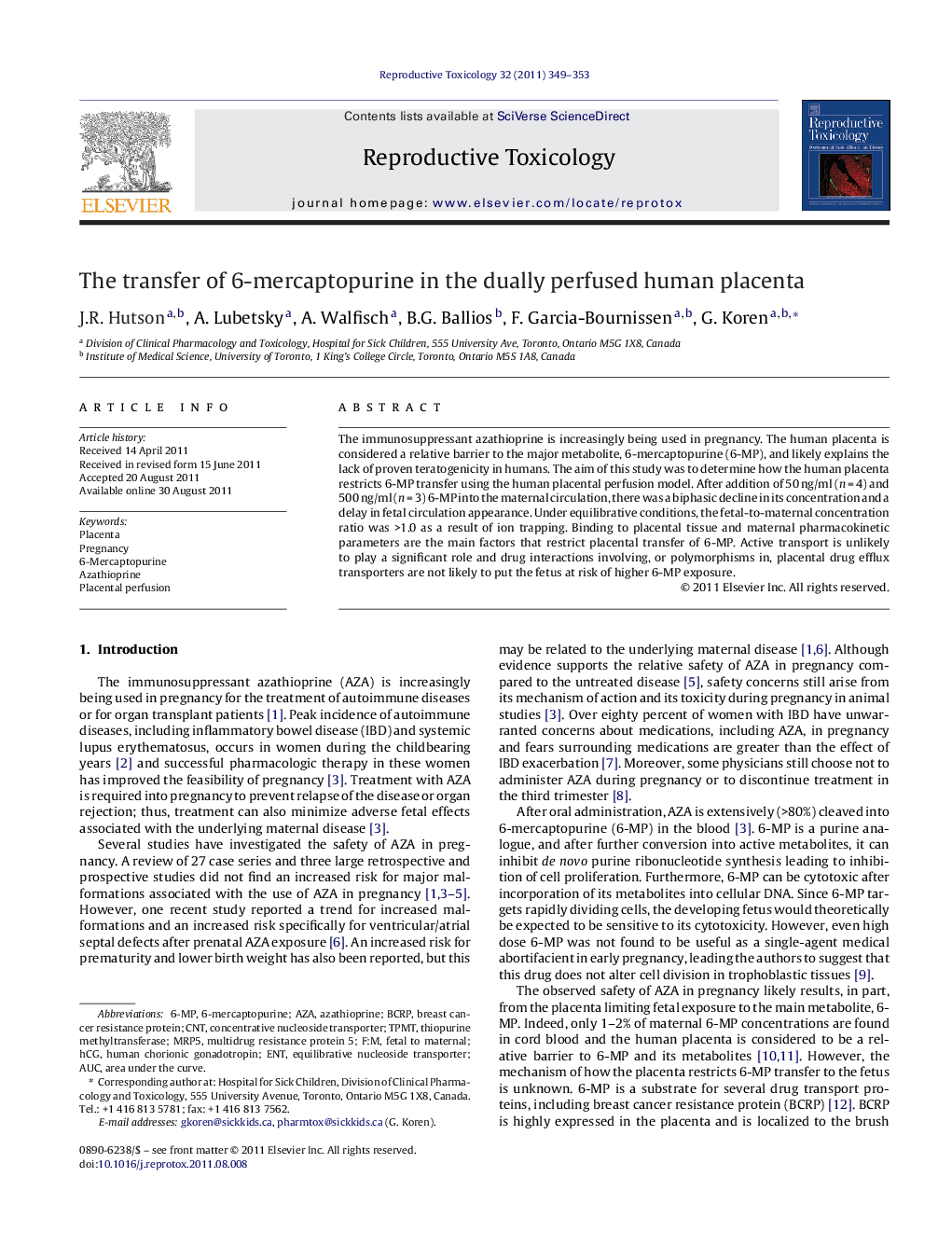| Article ID | Journal | Published Year | Pages | File Type |
|---|---|---|---|---|
| 2594030 | Reproductive Toxicology | 2011 | 5 Pages |
The immunosuppressant azathioprine is increasingly being used in pregnancy. The human placenta is considered a relative barrier to the major metabolite, 6-mercaptopurine (6-MP), and likely explains the lack of proven teratogenicity in humans. The aim of this study was to determine how the human placenta restricts 6-MP transfer using the human placental perfusion model. After addition of 50 ng/ml (n = 4) and 500 ng/ml (n = 3) 6-MP into the maternal circulation, there was a biphasic decline in its concentration and a delay in fetal circulation appearance. Under equilibrative conditions, the fetal-to-maternal concentration ratio was >1.0 as a result of ion trapping. Binding to placental tissue and maternal pharmacokinetic parameters are the main factors that restrict placental transfer of 6-MP. Active transport is unlikely to play a significant role and drug interactions involving, or polymorphisms in, placental drug efflux transporters are not likely to put the fetus at risk of higher 6-MP exposure.
► We use the human placental perfusion model to investigate 6-mercaptopurine transfer. ► Placental tissue binding and maternal pharmacokinetic parameters restrict transfer. ► Active transport is unlikely to play a significant role in restricted transfer.
